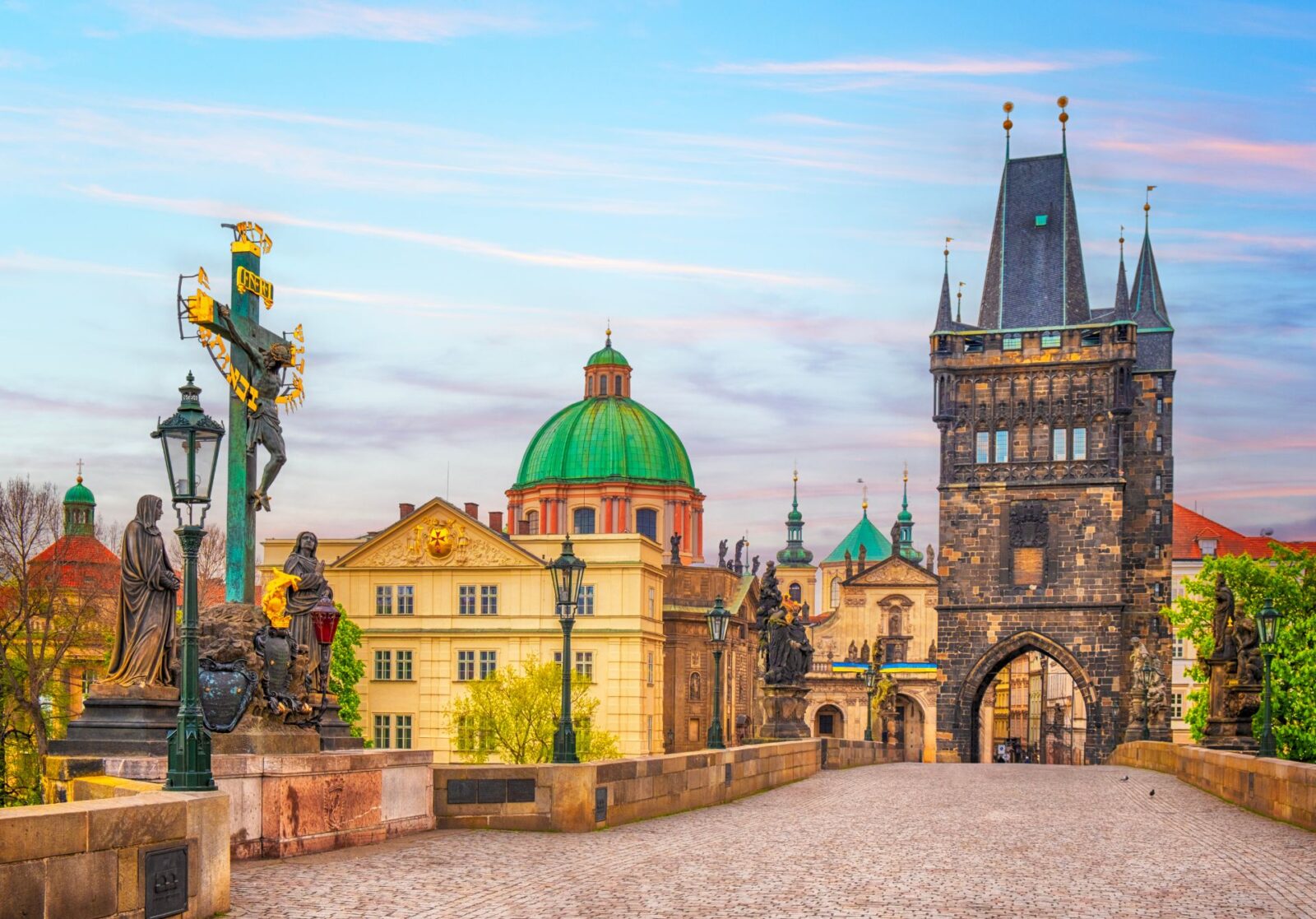Commissioned by King Charles IV in 1357, Charles Bridge (Karlův most) stands as one of Prague’s most iconic landmarks. Construction began under Master Otto and finished in 1402, replacing the earlier Judith Bridge destroyed by floods in 1342. The bridge’s foundation stone was laid on July 9, 1357 at 5:31 AM, with the palindromic sequence of numbers 1-3-5-7-9-7-5-3-1 chosen by royal astronomers for optimal astrological power.
Architectural Marvel
The bridge spans 516 meters across the Vltava River, supported by 16 arches shielded by ice guards. Built from Bohemian sandstone blocks, it exemplifies Gothic bridge construction techniques. The structure is 9.5 meters wide and connects Prague’s Old Town with the Lesser Quarter (Malá Strana). The bridge towers, particularly the Old Town Bridge Tower, showcase the finest Gothic architecture in Europe.
Statuary Gallery
Most distinctive are the 30 statues and sculptural groups installed between 1683 and 1714. Originally numbering 75, these Baroque masterpieces depict various saints and patron saints. The most famous include St. John of Nepomuk (installed 1683), whose touching brings good luck according to legend, and the statue of St. Luthgard (1710) by Matthias Braun.
Cultural Significance
Charles Bridge has been witness to numerous historical events and played crucial roles in Prague’s development. Until 1841, it was the only means of crossing the Vltava, making it vital for trade routes between Eastern and Western Europe. The bridge’s importance in Prague’s UNESCO World Heritage status cannot be overstated.
Modern Preservation
Recent restoration work (2008-2010) focused on replacing damaged stones, reinforcing the structure, and preserving original materials where possible. The 40-million-euro project sparked debate about preservation methods but ultimately helped secure the bridge’s future. Today, electronic monitors track structural movements and environmental impacts.
Visitor Information
Annually welcoming over 10 million visitors, the bridge is accessible 24/7 with peak crowds between 10 AM and 4 PM. Early morning or late evening visits offer the best photography opportunities. Street artists, musicians, and vendors create a lively atmosphere, though regulations now limit commercial activity to preserve the bridge’s dignity.
Conservation Challenges
Current challenges include: – Managing tourist impact on the historic structure – Protecting against flooding and climate change – Maintaining the delicate balance between access and preservation – Preserving the original statues (most now replaced by replicas)
Charles Bridge represents more than just a crossing point; it embodies Prague’s historical evolution, architectural achievement, and cultural resilience. For over 600 years, it has served as both a vital infrastructure and an open-air gallery of Baroque art. As Prague faces modern challenges, the bridge continues to adapt while maintaining its historical integrity, demonstrating how architectural heritage can be preserved while serving contemporary needs.
 Vacation Rentals in CZ
Vacation Rentals in CZ